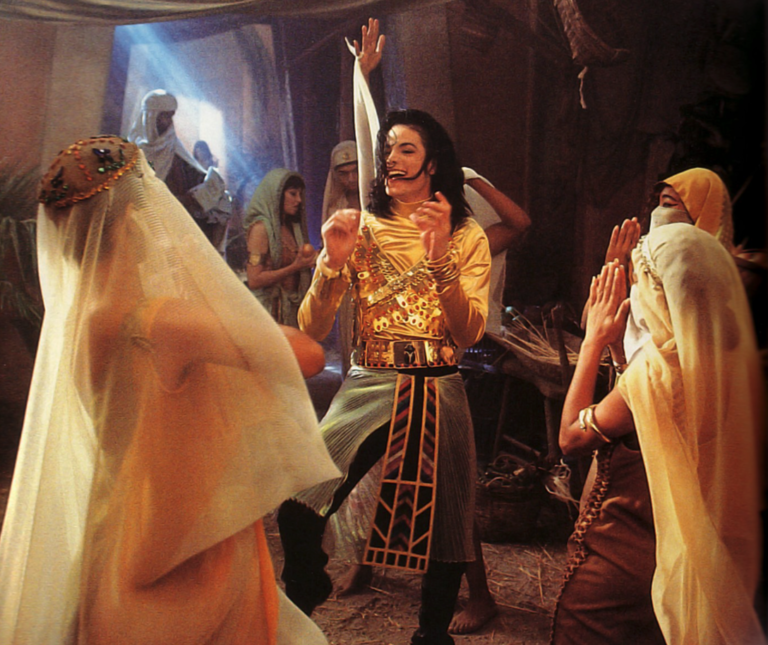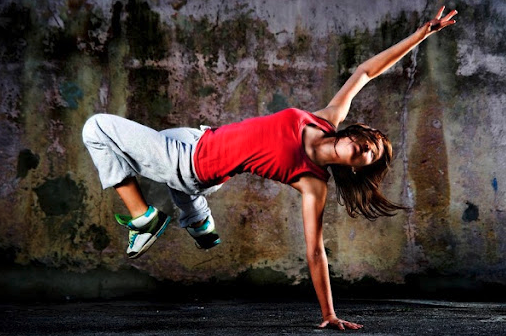CURRICULUM
Dance
Dance Curriculum Intent
Dance, as a discreet subject at Horizon, is more than learning a series of steps to music; it is a way of moving that uses the body as an instrument of expression and communication. Through dance, students are provided with a safe place to express themselves and a creative outlet for their ideas and feelings.
Through Dance students improve their social skills and develop the ability to communicate with others. They learn how to develop trust and cooperation when working with others and how to think creatively, developing solutions to problems as they arise. Students will acquire knowledge and skills through dance research and will gain an appreciation of all styles of dance from different genres and cultures. Students will develop a deep understanding of their own bodies and how they can move, as well as an appreciation of the physical demands of dance and the discipline and training needed to develop these skills. Students will develop confidence in performance through being exposed to; and taking part in performances in a range of professional situations and environments and will understand the contribution that is made by each professional to create a final piece.
Click here to see where Dance can take you
Key Strands
Performance skills
Learning short sequences skills and motifs or short extracts of professional repertoire in a range of styles. Being able to respond to feedback and set targets. Being able to analyse/evaluate their own performance, identifying areas for improvement.
Learning how to work from a range of stimuli-understanding how to go from page to stage-using PIE structure to evaluate ideas, working to a brief.
Choreography Skills
Appreciation
Using PIE structure to analyse key stylistic features of professional repertoire. Exposure to a range of inspiration professional work. Understanding the roles and responsibilities in production and performance and their impact and contribution to an overall piece. Being able to identify the key components of dance/choreographic devices and using correct dance specific terminology.
Year 7

Dance vocabulary
An introduction to key vocabulary in Dance.
Skills -
Learning and performing short sequences of basic movement (slide, jump, roll, turn) Developing short sequences of dance using RADS and choreographic devices. Understanding of4 main components of dance RADS (Relationships, Actions, Dynamics, Space) Choreographic devices- Canon, levels, tableaux, repetition. Using PIE structure to describe their own ideas/evaluate their own/others performances.


Dance through the decades
A project that explores how dance has changed over time.
Skills -
Learning and performing short sequences of repertoire (charleston, saturday night fever disco, 90s hip hop and breakdance) Responding to teacher feedback to improve their performance. Setting self and peer WWW and EBI and target Developing short sequences of dance using RADS and choreographic devices. Adding ideas of their own in keeping with the key stylistic features of the genre. Building on understanding of RADS and Choreographic devices from Dance Vocabulary SOW. Using PIE structure to write about the key stylistic features of each style-evaluating how/why the stylistic features contribute to the overall feel/popularity of the genre.

Year 8

Stimulus
An introduction to the different stimuli that can be used as a starting point for Dance work.
Skills -
Learning and performing full motifs (some professional rep from Ks4 included) Responding to teacher feedback to improve their performance. Setting self and peer WWW and EBI and targets with use of PIE structure.
Developing short sequences of dance using a range of stimuli including
• Shapes
• Poetry
• Art work
• Sound
Understanding how to use RADS and Choreographic devices to generate ideas for choreography. Being able to interpret how a stimulus has been used using PIE structure. Using PIE structure to describe their own ideas/evaluate their own/others performances. Understanding of definitions/uses/examples of Visual, Auditory, Kinesthetic, literary and thematic stimuli.


Remember the time - Michael Jackson
Exploring professional repertoire and how it was developed from “page to stage”
Skills
Learning full professional repertoire from Michael Jackson’s remember the time music video. Responding to teacher feedback to improve their performance. Setting self and peer WWW and EBI and targets
Developing the professional repertoire using Ancient Egypt as a stimulus. Use of RADS as well as a range of stimuli to develop ideas.
Understanding how to use RADS and Choreographic devices to generate ideas for choreography. Being able to interpret how a stimulus has been used using PIE structure. Using PIE structure to describe their own ideas/evaluate their own/others performances. Understanding of definitions/uses/examples of Visual, Auditory, Kinesthetic, literary and thematic stimuli. Understanding and responding to a brief more independantly. Explaining how their ideas meet the brief.

Year 9

Dance styles
Workshops in a range of dance styles to broaden dance skills/vocabulary.
Skills -
Learning and performing full motifs in a range of styles ( some professional rep from ks4 included) Contemporary, Capoeria, Street/commercial, Musical theatre etc. Responding to teacher feedback to improve their performance. Setting self and peer targets using PIE structure. Developing short sequences of dance using RADS and choreographic devices. Adding ideas of their own in keeping with the key stylistic features of the genre. Understanding how to use RADS and Choreographic devices to generate ideas for choreography. Using PIE structure to write about the key stylistic features of each style-evaluating how/why the stylistic features contribute to the overall feel/popularity of the genre.


Appreciation of Dance- Mini version of the entire BTEC SPEC.
Comp 1-Appreciation of 3 professional works and roles and responsibilities in dance.
Comp 2- Learning of professional rep- tracking progress.
Comp 3- Responding to a brief and evaluating ideas/process.
Skills
Responding to teacher feedback to improve their performance. Setting self and peer WWW and EBI and targets using PIE structure. Tracking progress over time and impact of actions taken to improve performance.
Developing the professional repertoire using the starting point of the professional repertoire.
Using a range of stimuli including visual, auditory, kinesthetic, thematic,literary.
Understanding how to use RADS and Choreographic devices to generate ideas for choreography.
Being able to interpret how a stimulus has been used using PIE structure.
Using PIE structure to describe their own ideas/evaluate their own/others performances.
Understanding of definitions/uses/examples of Visual, Auditory, Kinesthetic, literary and thematic stimuli.
Understanding and responding to a brief more independantly.
Explaining/evaluating how their ideas meet the brief using full PIE structure.
Roles and responsibilities, key skills, personal qualities needed.

Year 10

Component 1
Component 1 involves students studying the work of three professional choreographers. They will complete a written portfolio throughout the year.
Skills -
Practical workshops learning full sequences from each of the professional works. Responding to teacher feedback to improve their performance. Setting self and peer WWW and EBI and targets using PIE structure. Tracking progress over time and impact of actions taken to improve performance. Performance evening in the theatre for Remembrance day. Developing the professional repertoire using the starting point of the professional repertoire. Using a range of stimuli to respond to a brief for each professional work including visual, auditory, kinesthetic, thematic,literary. 5 soldiers- remembrance day piece based on stimulus of war. Nutcracker- Sweet themed group piece based on childhood sweeties. Rosas Danst Rosas- Beyonce music video sequence. Study of 3 professional works 5 Soldiers Rosie Kay Nutcracker Matthew Bourne Rosas Danst Rosas Roles and responsibilities in Dance performance and production. Stylistic features of dance including RADS, Choreographic devices, starting points and process. Use of PIE structure to describe and evaluate

MOCK EXAM
This will be a smaller mock of the full Component 3 external exam, this will allow students to understand the exam and the skills they need to be successful and will also allow them to receive feedback on strengths and areas for improvement.
Skills
Perform a 3-3.5 minute piece as part of a group Performance evening in the theatre Develop a 3 minute long piece as part of a group. Work from a stimulus set by the exam board over a period of 6 hours Using a range of stimuli to respond to the brief for each professional work including visual, auditory, kinesthetic, thematic,literary. Plan 7-10 minute long piece as part of a group using RADS and a range of stimuli. Use of PIE structure to complete 3 written logs in exam conditions.
Year 11

Component 2
Component 2 requires students to learn two minutes of professional repertoire. They will perform this and will track their progress through a series of logs.
Skills -
Practical workshops to learn 2.5 minutes of professional repertoire. Responding to teacher feedback to improve their performance. Setting self and peer WWW and EBI and targets using PIE structure. Tracking progress over time and impact of actions taken to improve performance.
Practical creative or improvisation workshops in the style of the professional repertoire. Using a range of stimuli to respond to a brief for each professional work including visual, auditory, kinesthetic, thematic,literary. Physical and Interpretive skills in Dance.
How to set and evaluate SMART targets
Use of PIE structure to evaluate performance and track progress.


Component 3
This is an external exam marked by the board. Students will complete this under controlled conditions over a number of weeks in lessons.
Skills
Perform in a 7-10 minute long piece as part of a group in the theatre. Develop a 7-10 minute long piece as part of a group. Work from a stimulus set by the exam board over a period of 12 hours. Using a range of stimuli to respond to the brief for each professional work including visual, auditory, kinesthetic, thematic,literary.
Plan 7-10 minute long piece as part of a group using RADS and a range of stimuli.
Use of PIE structure to complete 3 written logs in exam conditions.

